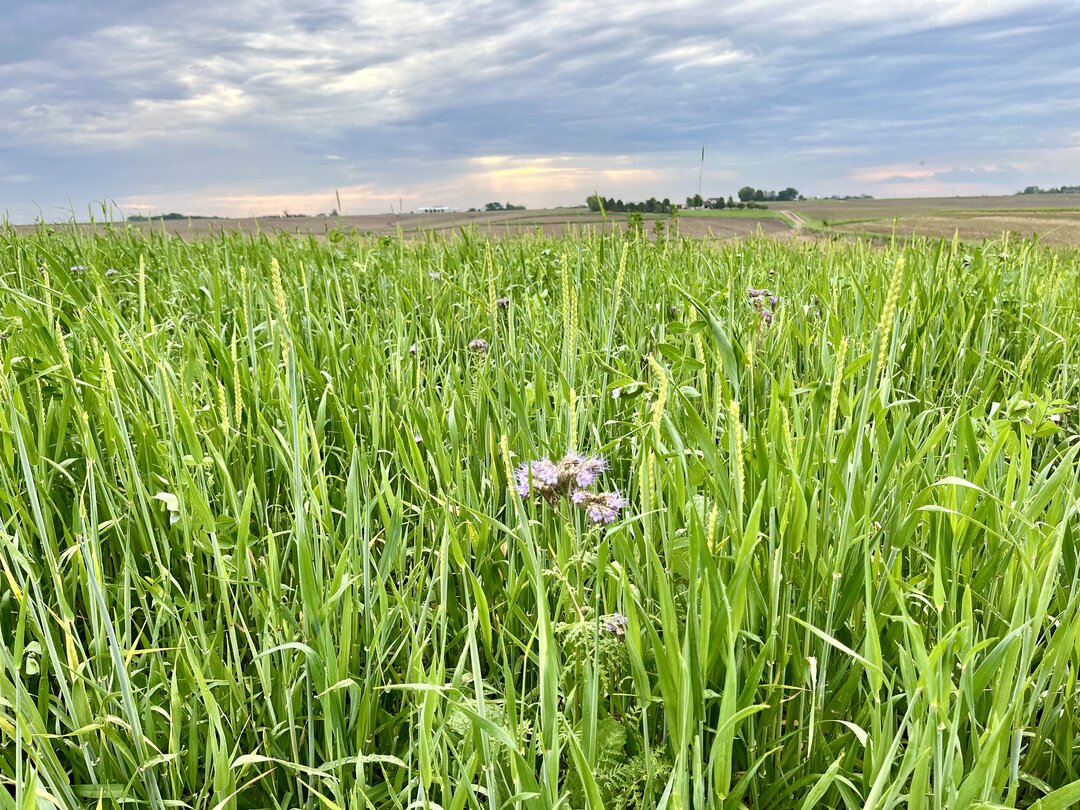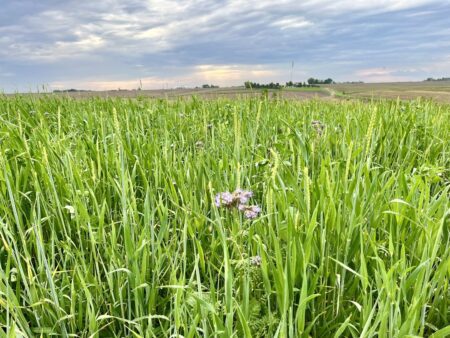
It may not feel like spring outside, but rest assured it’s on its way! While it’s still chilly, now is the perfect time to do some planning for the upcoming growing season. If you have livestock that means planning for forage during the year. If you’re growing crops that might mean fine tuning your fertility program or finding new ways to implement cover crops.
No matter what your situation is, spring cover crops can play a role in your success whether feeding livestock, controlling erosion, suppressing weeds, or all of the above. A few species consistently make it to the top of our spring favorites list, namely oats, peas, and barley. Each species has its own merits as to why we recommend these staples year after year.

Davis Behle’s spin on a Spring Trio Blend with Oats, Peas, Barley, Collards, Clover and a little Phacelia.
Oats
Spring oats are known as one of the fastest growing crops and are commonly used as a nurse crop for a variety of different purposes. Oats also provide great yield potential in terms of tonnage. Paired with the nutritional quality of the peas and barley, this makes for an excellent trio. Additionally, oats host mycorrhizal fungi in the soil, giving plants improved access to water and key nutrients needed to resist pests and disease.
Peas
As nitrogen fixers, spring peas increase the level of nitrogen in the soil while also accumulating high levels of it within the plant. This makes them a protein-rich feed option for cattle and other livestock. This legume is also among the fastest growing spring plants, which complements oats nicely. Peas are commonly used in grazing and haying mixes or even as green manure.
Barley
Barley, though not the highest yielding spring crop, offers extremely high quality forage. Beardless barley can be used to add diversity to a mix and provide high quality forage without the bearded trait which can cause irritation to livestock. Barley is also very tolerant of high pH or salty soils, making it a good option for growers with those conditions. In addition to making a great grazing or hay crop, barley can also be harvested as a grain for livestock feed.
Mix ’em together!
The Spring Trio mix is an excellent choice as is and makes a great base for a custom mix. Last year, Davis Behle designed his own spin on the Spring Trio mix to use on his farm to feed livestock. The photo above shows the standard oats, peas, and barley mix with collards, clover and a little phacelia added for some additional spring blooms. Reach out to our team if you’re interested in a custom cover crop mix designed specifically to meet your spring goals!
Another great option is to opt for a pre-made mix, available for browsing and purchase directly through our website. Our lineup of pre-made mixes is expertly crafted with specific goals like annual grazing or soil building in mind, aiming for diversity and functionality in every mix. Back by popular demand, our Spring Trio mix is a combination of oats, peas, and barley for the perfect spring forage blend. Check out our store to see what mix could fit your situation.
Want to talk with one of our expert sales representatives?
Fill out this form or give us a call today. 402-469-6784.
